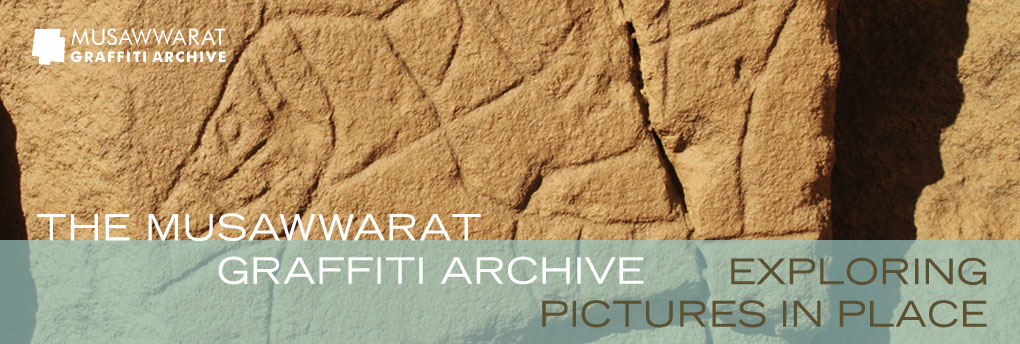Musawwarat Graffiti Project
The Musawwarat Graffiti Project, developed and directed by Cornelia Kleinitz, has been dedicated to the detailed documentation, study and publication of the graffiti of the Great Enclosure at Musawwarat since 2007. Ongoing research within the project has been illustrating the broad palette and intricacy of graffiti writing and image making at the Great Enclosure from the Meroitic period until today. As one of its main contributions, the project is in the process of opening up the graffiti corpus from this ancient sacral centre to a global public. To date, several thousand graffiti have been recorded and the data are in the process of being shared globally via the Musawwarat Graffiti Archive. Apart from newly generated data, the Archive's 'Graffiti in Place Database' is also presenting archival data from previous recording efforts.
The term ‘graffito’ is employed within the Musawwarat Graffiti Project to describe an intentional, secondary (or tertiary etc.) modification of a built surface for purposes that do not appear to be directly linked to building processes. This definition excludes traces from the primary building process and decorative programme, such as reliefs or sculpture as well as chisel traces from quarrying and shaping the sandstone blocks. It also excludes traces of building modification, such as the re-shaping and polishing of sandstone blocks and their surfaces for secondary use, an issue that is especially relevant for the Great Enclosure at Musawwarat with its multiple building phases involving the re-use of building blocks over time. Mason’s marks are likewise linked to the building and re-building process. They are easily recognisable by their restriction to individual block surfaces and by their adherence to a specific canon of motifs with very consistent form and line characteristics, apparently due to the use of a standardised tool.
Text: Cornelia Kleinitz (2011, last update: 14/04/2014)






